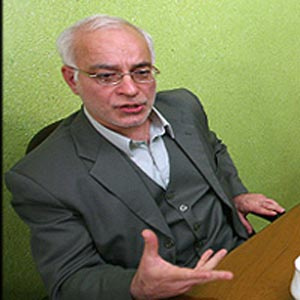Shield Shelved, Iran Deal Sealed?

Two decisive factors have encouraged the United States to shelve its plans of installing missile defense shields in Poland and the Czech Republic. First are Obama’s efforts to demonstrate he actually wants a change in United States’ Russia policy. Second is Russia’s increasing cooperation in pressuring Iran.
In the July meeting between Obama and Medvedev in Moscow, it became clear for the American president that the missile defense shield is not something Russia’s would capitulate to. Russians had prepared to deploy their Iskander missiles in Kaliningrad to show that they will not compromise on their national security and interests. Kremlin deems the shield as a threat to Russia’s national security.
Russians’ adamancy has been proved in distant past. Russians will never deal with the united states over their national security and interests, but they are more than happy to sacrifice the interests of other countries and meet U.S. half the way when it is about their owns interests. A clear example was how they treated Serbs, their closest East European ally, on the story of Kosovo.
The 1999 secret deal between Holbrooke and Chernomyrdin in Finland is a prime example. The agreement forced Serbs to withdraw their troops from independence-seeking Kosovo. Iraq, Afghanistan and many other instances can perfectly show how Moscow can jeopardize the interests of other countries for its own sake.
Kremlin was successful in conveying that point to Obama. Hence, in order to show how different his policies are from Bush’s, Obama put forth another proposal in Moscow Military Academy: if Russia cooperates with the United States over Iran’s nuclear program, U.S. is ready to shelve the missile defense shield plan.
Is Obama Honest?
Freezing the installation of defense shield in East Europe has been the most significant tactical step taken by Obama to thaw US-Russia lukewarm relations. The important point however is that Obama is going to shelve, and not quit, the plan.
The wording has raised doubts among astute Russian observers. They believe that the halt is only to gain Russians’ consent for cooperation over Iran and Afghanistan issues and the plan will be followed as soon as U.S. achieves its regional goals. The assumption gains more credence if we know that the missile defense shield is part of United States’ long-term plan of international radar system. A triangle of radar coverage with centers in Alaska, California and the Czech Republic will be formed. This was a miniature version of Star Wars project launched during Reagan’s administration and called off due to its heavy expenses with USSR collapse.
When U.S. is working on such a costly project, it is hard to believe that a short-term deal with Russia will make everything go up in smoke. This knowledge impels us to consider the freeze as a mere ploy which aims to break the ice of US-Russia relations and encourage Russia to cooperate with West on Iran’s nuclear case.
Moscow’s practical help to Americans is allowing the U.S. Air Force to fly over Russian territory and commute to Afghanistan. This was a meaningful, generous gesture Russians made and now it has become clear what they received instead. It seems that Iran and Afghanistan affairs and US-Russia relations have undergone changes in Obama’s era but time has not come for pick the fruits of these changes.
In July 2009, after the talks between Medvedev and Obama and Obama’s trade-off proposal, I warned about its consequences for our country. The post-election turmoil left it ignored however. Although at that time the proposal was met by a lukewarm reception, today the deal seems more achievable than ever.
But a basic question is: why is Iran’s nuclear program linked to the missile defense shield? Answer: the United States mislead the world from the first day it decided to install the shield. It called it a guarantee against Iran and North Korea’s attacks, while Russia knew well that the primary objective of these ambitious project was to assure its missile and radar superiority over Russia and control Russia from its Western border.
Russians may or may not know the hidden intention behind Obama’s new plan. If they are aware of the hidden agenda behind United States’ friendly, then they are behaving in a way that precludes added pressures on Iran. Russians have always opposed Iran’s uranium enrichment; however, this was different from U.S. discontent in two ways: first of all, Russians believed in diplomacy and ruled out sanctions and military measures. Second, they discriminated between research-based enrichment and industrial enrichment.
However, their stance has undergone fundamental shifts during the past three years. Iran has successfully carried on enriching uranium and promoted the notion that using nuclear energy entails the right to enrich uranium. If Russians want to put Iran under pressure at this stage, they can only work on toughening the sanctions, which has proved to be futile during the recent years.
However, if Russians believe in the sincerity of United States’ plan to halt the defense shield project, their rapprochement means more UN Security Council sanctions. However, likely resolutions depend on the outcome of Iran’s negotiations with U.S. and the European Union. Russians know that Iran’s entrance into a new stage will not serve their interests, since diffusions of tensions between Iran and the United States, and likely direct talks to settle down problems, will reduce their maneuverability.

